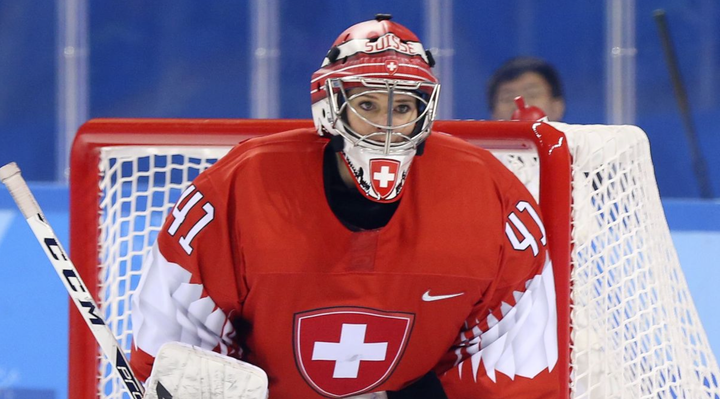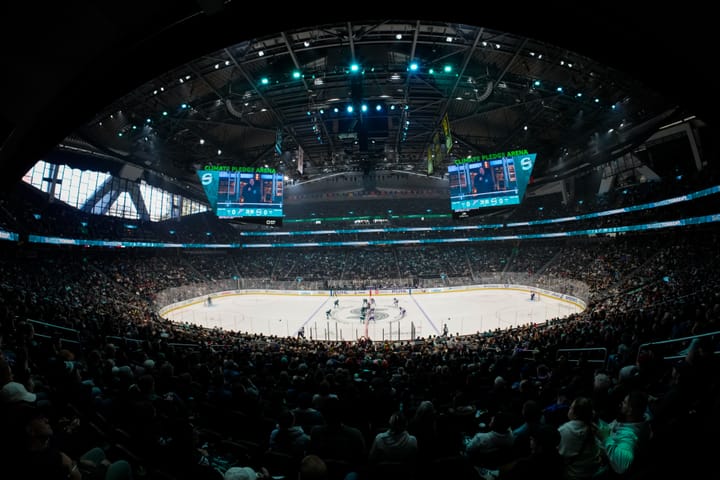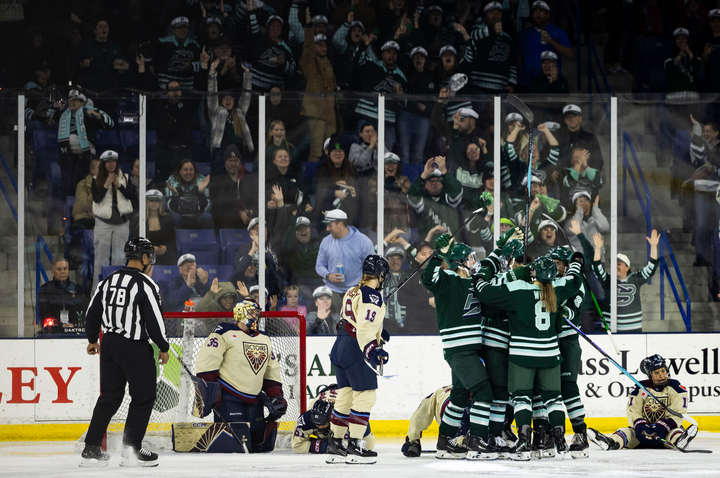How head coach Don MacLeod prepared Team USA for the full-contact 1990 Worlds
Hear from Team USA’s coach on the first Worlds tournament
A few weeks after The Ice Garden published a retrospective on the 1990 IIHF Women’s World Championship in Ottawa, we received an email from Don MacLeod, the head coach of Team USA at the 1990 Worlds. Coach MacLeod was eager to help us fill in some of the blanks from one of the most significant events in hockey history. In a recent interview, we talked hockey with the silver medal winning coach of the 1990 Worlds and one of the most successful coaches in the history of college hockey.
Prior to taking the reigns of Team USA, MacLeod had established himself as one of the best coaches in the country behind the bench at Northeastern University. His Huskies went unbeaten in 42-consecutive games between 1987 and 1989, so he knew how to win hockey games. But no one, including MacLeod, knew what to expect in the first IIHF-sanctioned World Championship.
Hitting the Ice
The biggest challenge for USA, besides the Canadian squad, was the fact that the tournament was full-contact and on a North American ice surface. The smaller ice surface brought players in close proximity with each other, which likely resulted in the most physical IIHF women’s tournament in the history of the sport.
Hitting has never been legal in girls’ and women’s hockey in the United States, so MacLeod had his work cut out for him. He opted for a roster filled with big, strong skaters. Even Kelly Dyer, his goalie from Northeastern, towered over most of the competition at 5-foot-11.
“As soon as I heard it was going to be full contact — which was way before we competed — I started to think about getting some size and tried to use some intimidation tactics, but the Canadians didn’t give a shit,” MacLeod said. “They hit anybody! We were a little bigger, but Canada was faster and more skilled. The size didn’t help me as much as I had hoped it would.”
Complicating matters was how little time MacLeod — and the rest of the field — had to prepare for the full-contact tournament. He knew he wanted a roster with plenty of size and skill, but he also wanted a team that was familiar with each other. The latter part of that equation was all but impossible to cultivate due to the tight schedule Team USA had heading into the tournament.
“With the Olympics now, you can spend a year together training,” said MacLeod. “With my team, I had my players back for Christmas, they had to pay their own way to Northeastern where we practiced on our rink, but they had to get there and get back home — none of it was covered. It wasn’t illegal and it wasn’t legal, but the ones who wanted to play in the Worlds were there. I even had a player come in from Alaska, a third-liner named Heidi Chelupnik.”
Players going the extra mile for the right to compete is unfortunately a story that is all too familiar to those who follow women’s hockey. But it’s important to remember how momentous this event was. The 1990 Worlds in Ottawa presented a unique opportunity for women’s hockey to be in the spotlight, which is why players wanted to compete so badly and why MacLeod wanted his team as prepared as they could be.
Team USA only practiced together for few days at a time, which left little time to develop chemistry and even less time to learn the complex art of hitting. Obviously, this was a big safety issue and something that MacLeod didn’t take lightly. He focused on the basics, specifically how his players could protect their heads, but he couldn’t prepare them much beyond that.
“Both the Canadian team and our team — we were up for it,” MacLeod said. “There were some tremendous hits. Wicked hits. One of our defensemen, Judy Parish from Dartmouth, went end-over-end behind our net. She was huge, one of the big ones (5-foot-9) ... she got murdered by some little Canadian behind the net. I thought she was going to have to be carried off the ice, but she was just quiet after that.”
By his recollection, MacLeod believes that Team USA and Team Canada were the most physical teams in the tournament. Heading into the tournament, he spoke with coaches of USA’s men’s national teams to get an idea of what structures and systems he might come up against in Ottawa. He reasoned that the women’s teams would do something similar to their male counterparts, and was right on the money.
Skill and Will
The unofficial world championship back in 1987 made it crystal clear that Canada was far and away the best team on the planet. Team USA was considered a good team, but they were by no means the powerhouse they are today. “[Cindy] Curley and [Cammi] Granato were two of my very best players,” said MacLeod. “Granato was a winger on the first line with one of my players [from Northeastern] and Curley was the second line center. She was good enough to be the first line, but [Tina Cardinale] from Northeastern was our captain for two years when we won nationals, which was one of the reasons I got the job.”
Despite having a talented roster featuring several future USA Hockey Hall of Famers, USA was far from a lock to win silver. “Oh, big time,” said MacLeod. “[Canada] was years ahead of us and in our game against Finland, we damn near lost it — Sweden, too.”
In the group stage, Finland gave USA a big scare. Riikka Sallinen (then Riikka Nieminen) put on a show against the Americans.
“She could stickhandle like I couldn’t believe,” MacLeod remembered. “Finland almost beat us, but they didn’t — I was nervous in that one. We were on the power play and she got the puck and she put on a stickhandling display. We had the extra skater and we were better than they were as a team, but she stickhandled for about a minute without getting touched. I’m screaming from the bench, ‘Body! Body! Body!’ ... It was embarrassing. It felt like it lasted an hour, just her all by herself with the puck, with all of my players chasing her like dogs chasing a rabbit.”
After catching their breath from chasing Sallinen around the ice, USA held on to beat Finland 5-4. In the semifinal against Sweden, MacLeod buried his players during the first intermission after his team fell behind early. After tearing them down, he built them back up by reading them a letter from President George H.W. Bush and the First Lady to inspire them. His decision to come down hard on his players and give them something to play for worked. USA rallied to win 10-3, earning a spot in the final against Canada.
A Silver Finish
At the urging of his captain, MacLeod tried the same trick in the final against Canada, but the magic was gone. Team USA gave up five straight goals after earning an unlikely two-goal lead in the first period to lose the first-ever Worlds gold medal game by a score of 5-2.
At Northeastern, MacLeod had coached Team Canada’s Vicky Sunohara. After the gold medal game he asked her if Team Canada’s head coach Dave McMaster had some kind of secret to get the most out of his team. Sunohara told her college coach the truth: there was no secret. Canada practiced, had better players, and according to MacLeod, McMaster was the better coach. That’s high praise coming from a coach who led the Huskies to eight consecutive Beanpots.
MacLeod served as an advisor and evaluator to Team USA at the 1992 Worlds, where America was routed in the gold medal game 8-0 by Canada. That defeat only served to highlight the performance of MacLeod’s team in the 1990 Worlds. To this day, hockey remains his great love. He has kept close with many of his former players, several of whom are now coaches themselves.





Comments ()